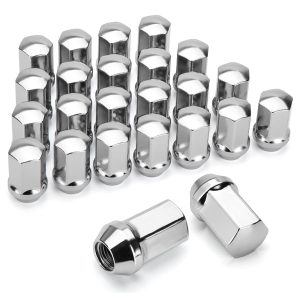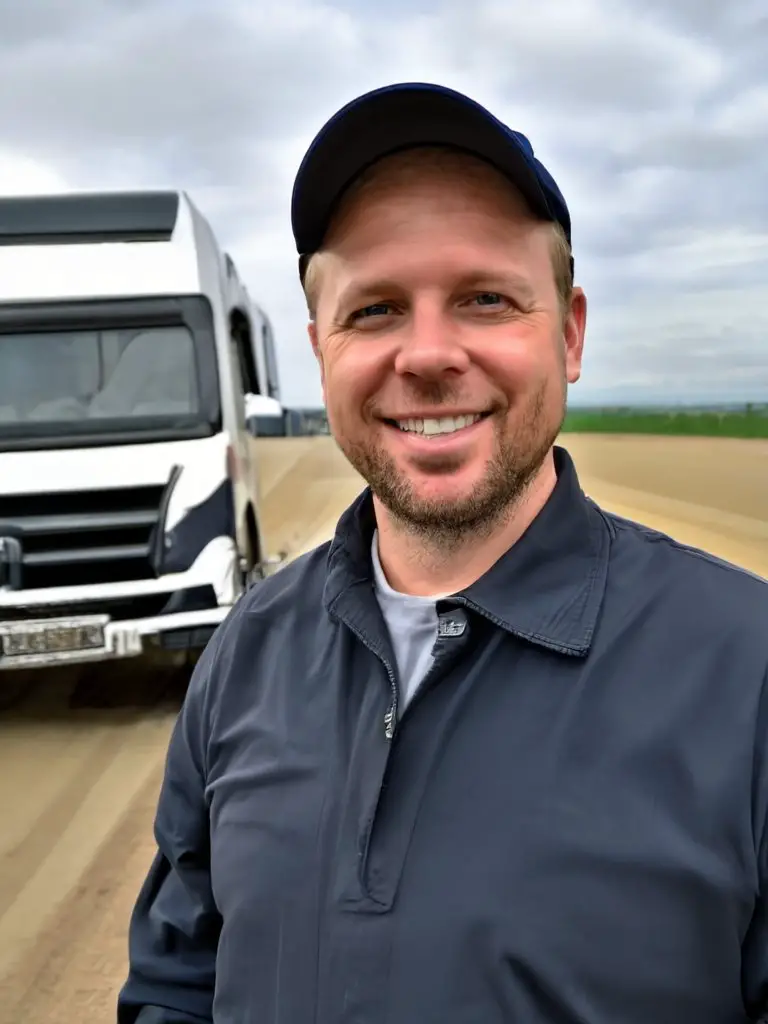Securing your Chevy’s wheels onto its axle is the vital role of lug nuts. To avoid any safety hazards, it’s important to properly understand these small yet crucial components, their purpose, different types, and their measurement. While it seems like a complex subject at first, with the right knowledge and understanding, you can easily master it.
This article aims to provide you with an overview of lug nuts, the techniques and tools needed to measure them accurately, and crucially, how to select the appropriate socket size that correlates to the size of your lug nuts.
What are Lug Nuts and how do they work?

Lug nuts, have a critical role in the safety and smooth operation of your vehicle. These tiny pieces of metal are often overlooked, but they perform a crucial job of fastening the wheel to a vehicle. If cars are your passion and you get thrilled about everything they entail, you can’t just ignore the importance of lug nuts.
These fasteners are essentially the glue that holds the wheel and the car’s axle together. Their central role in ensuring safety can’t be stressed enough. A vehicle without properly fastened lug nuts is like a sprinter running a race with untied shoelaces – a recipe for disaster.
Broadly speaking, lug nuts are classified into two types: conical and spherical. The type needed is determined by the shape of the wheel’s lug hole. Conical lug nuts are typically used for aftermarket wheels, while spherical lug nuts are standard with OEM (Original Equipment Manufacturer) wheels. It’s crucial to use the right type, as mismatched lug nuts can lead to less secure wheels.
How to Replace Lug Nuts
Maintaining and changing lug nuts does require a bit of technical savviness, but it’s a skill worth learning for any car enthusiast. Proper maintenance extends to checking for wear and replacing lug nuts at regular intervals, usually every 25,000 miles or whenever new tires are installed, whichever comes first. However, if you see signs of rust or deformation before hitting this mileage, a replacement is probably needed.
The torque wrench is a true companion in maintaining lug nuts. When tightening them, make sure to follow the ‘star pattern’. This system involves starting with one lug nut, skipping the next, and following this order until each has been properly tightened. This makes sure there is even pressure distribution on the wheel.
When it comes to buying replacements, quality matters. Choosing high-grade lug nuts can save on replacement costs over time.
If you own a Chevy Silverado or Tahoe, these Lug Nuts come recommended.

How to Effectively Measure Lug Nuts
Many hobbyists often overlook the precise measurement required for a perfect fit for these Lug nuts.
First things first, you’ll need to have the right tools to do this effectively. A quality caliper ought to be every mechanic enthusiast’s best friend. Calipers are known for their accuracy and are important when sizing up lug nuts for correct dimensions. You’ll want to have both a digital and a manual version on hand, as each has its merit in determining the specific attributes of a given lug nut.
Essential Measurements
the essential measurements are the diameter, thread pitch, and thread count.
the diameter: It is a straightforward concept; it is the distance across the widest point of the lug nut. You can make it out by adjusting your caliper to zero, opening its jaws just wider than the nut, closing the jaws around the nut, and finally, reading off the number given.
The thread pitch: It translated as the distance between each thread on the lug nut. While it may seem daunting to measure, it’s a piece of cake when you have a thread gauge on hand. Simply line up each blade of the gauge with the lugs’ threads until you achieve a perfect match; the number on the aligned blade is your thread pitch.
The thread count, or threads per inch (TPI): It further distinguishes the type of lug nut you’ve got. This can be measured by lining up your thread gauge against the lug nut and checking which blade fits best into the threads without resistance.
Now the question that pops up frequently is: What about conical and spherical lug nuts? Well, determining if a lug nut is conical (60-degree taper) or spherical (round or ball seat) is exceedingly simple. Round nuts have an unmistakable spherical profile, while conical ones taper off towards the end, appearing cone-shaped.
A word of caution: When all is said and done, never eyeball or guess the size of your lug nuts. Your vehicle’s safety pivots around these unsung heroes. Wrong measurements can result in detrimental consequences, potentially causing catastrophic wheel detachment. So always make sure to measure twice.

Selecting the appropriate Socket
Now we’ll be discussing the important of choosing the right size socket for your lug nuts.
Like choosing the right key for a lock, the right-sized socket ensures proper contact and pressure, preventing potential damage. Using an incorrect socket size can strip the lug nut, leading to traumatic scenarios. That stripped lug nut could turn into a stubborn mule, making replacement a nightmare.
Determining the correct socket size does require some precision and patience. In a nutshell, socket size corresponds to the ‘across the flats’ measurement of the nut. “Across the flats,” refer to the distance on a hexagonal or a square nut from one flat surface to another flat surface directly opposite. Following these steps and having the right tools at your disposal, such as a vernier caliper or a ruler, can ensure an accurate measurement.
First, position your measuring tool across the flat sides of your lug nut – not from corner to corner, but from flat to flat. Understandably, this can be a bit tricky on a rounded lug, but take your time. Second, note down the measurement. This is your lug nut size (in millimeters or inches depending on your measuring device).
Once you have your lug nut size, you can then find the corresponding socket size. Socket sizes are typically marked on the sides – a 17mm socket is meant for a 17mm lug, simple as that. But, in this kingdom of nuts and bolts, ensuring accuracy is the only key to success.

Mike is an experienced writer in the automotive space. Ever since he was a teenager, he’s been interested in cars and started to learn about the mechanics of it. He is specifically passionate about Chevrolets and has been an expert researcher on everything to do with Chevys for the last decade. In his spare time, Mike likes to mountain bike and enjoy the outdoor nature.



